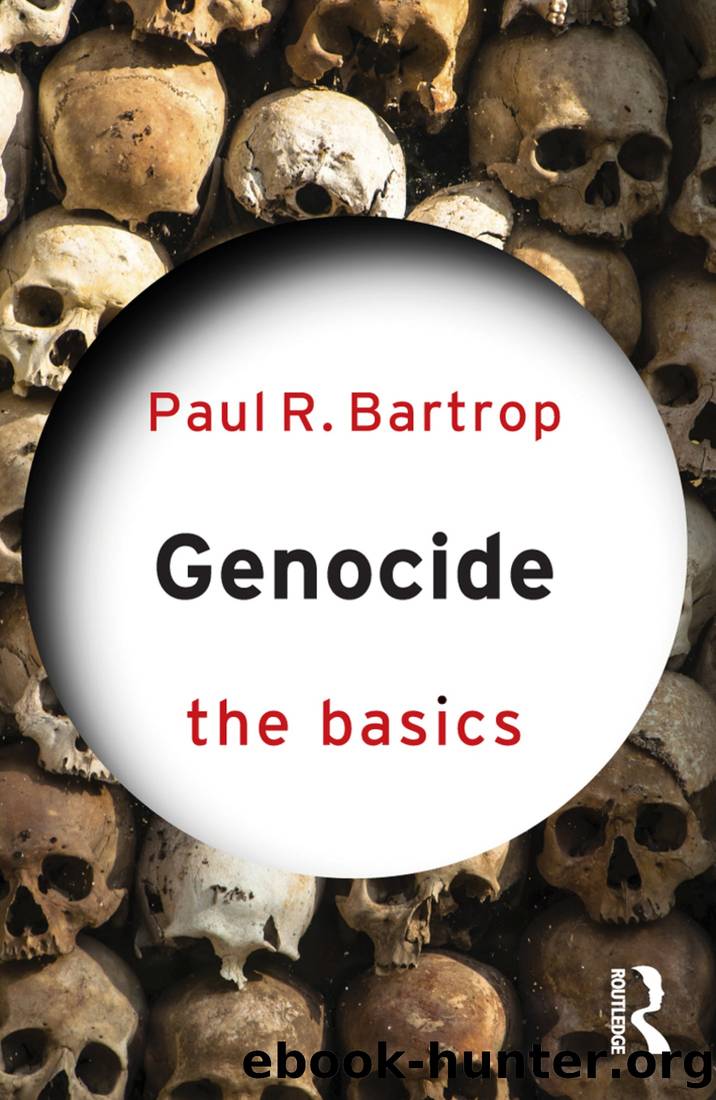Genocide: the Basics by Paul R.; Bartrop

Author:Paul R.; Bartrop [Bartrop, Paul R.;]
Language: eng
Format: azw3, mobi
Publisher: Taylor & Francis Group
Published: 2022-02-15T00:00:00+00:00
Kosovo
In the aftermath of the drawn-out and bloody conflict in Bosnia-Herzegovina between 1992 and 1995, Serbia's nationalist regime, led by Slobodan MiloÅ¡eviÄ, seemed at first to settle down and return to the world of peaceable nations. In March, 1998, however, violence once more erupted, this time in Serbia itself â or, more specifically, in its southern province of Kosovo. The long-term ethnic and religious animosity in the province between minority Serbs and majority Kosovars (a Muslim people of Albanian ethnicity) led to the establishment of a self-defence organisation, the Kosovo Liberation Army (KLA), which engaged in terrorist activities in order to attract international attention to their cause and at the same time intimidate Serbs in the province to leave Kosovo.
The KLA was an underground movement created in the late 1990s to resist MiloÅ¡eviÄâs plan to evict the Albanian majority from Kosovo. At first it was comprised of several hundred radical Kosovar secessionists who opposed the more moderate majority, led by their Prime Minister-in-waiting, Ibrahim Rugova (1944â2006), who sought instead to achieve compromise. The KLA rejected this as utopian in light of the bloody events in Bosnia between 1992 and 1995.
As tension intensified, a carefully planned operation carried out by the KLA on January 8, 1999 ambushed and killed three Serbian policemen. Another was murdered two days later. In response, on January 15, Serb police and army detachments attacked the village of RaÄak, in south-western Kosovo. Army artillery had already hit the town in the days leading up to the assault, and with the advance into RaÄak a large number of men and boys â at least 45, but possibly more â were butchered by the Serb forces. One was a boy aged 12; two were women; one of the men was decapitated (Totten and Bartrop 2008: 350â351). US Ambassador William Walker (b. 1935), the head of the UN's Kosovo Verification Mission monitoring Serb progress towards an easing of conditions for Kosovar Albanians, immediately condemned the massacre as the work of Serbs, and declared the victims to be innocent civilians.
Based largely on Walker's assessment, but confirmed by other eyewitness accounts, world leaders quickly came to the conclusion that the situation existing in Kosovo had to be changed permanently. US Secretary of State Madeleine Albright (b. 1937) realised that any attempts at negotiation with the Serbs had to be backed by a credible threat of force, and that NATO had to be the major vehicle for enforcing it.
RaÄak, as a catalyst for military intervention, had one further implication: an attempt at ethnic cleansing by Serb forces acting on MiloÅ¡eviÄâs orders. Increasingly, the United States and its European allies saw a need to intervene before this state-initiated killing got out of hand.
One last chance for peace took place via a series of negotiations involving delegates from the United States, several European NATO countries including Britain, France, and Germany, together with Russia, Yugoslavia, and representatives of Kosovar Albanian groups. These negotiations took place at Rambouillet, near Paris, between February 6 and March 19, 1999.
Download
This site does not store any files on its server. We only index and link to content provided by other sites. Please contact the content providers to delete copyright contents if any and email us, we'll remove relevant links or contents immediately.
The Secret History by Donna Tartt(18225)
The Social Justice Warrior Handbook by Lisa De Pasquale(11963)
Thirteen Reasons Why by Jay Asher(8472)
This Is How You Lose Her by Junot Diaz(6463)
Weapons of Math Destruction by Cathy O'Neil(5853)
Zero to One by Peter Thiel(5507)
Beartown by Fredrik Backman(5372)
The Myth of the Strong Leader by Archie Brown(5249)
The Fire Next Time by James Baldwin(5033)
How Democracies Die by Steven Levitsky & Daniel Ziblatt(4971)
Promise Me, Dad by Joe Biden(4916)
Stone's Rules by Roger Stone(4874)
100 Deadly Skills by Clint Emerson(4700)
A Higher Loyalty: Truth, Lies, and Leadership by James Comey(4565)
Rise and Kill First by Ronen Bergman(4553)
Secrecy World by Jake Bernstein(4406)
The David Icke Guide to the Global Conspiracy (and how to end it) by David Icke(4394)
The Farm by Tom Rob Smith(4332)
The Doomsday Machine by Daniel Ellsberg(4253)
